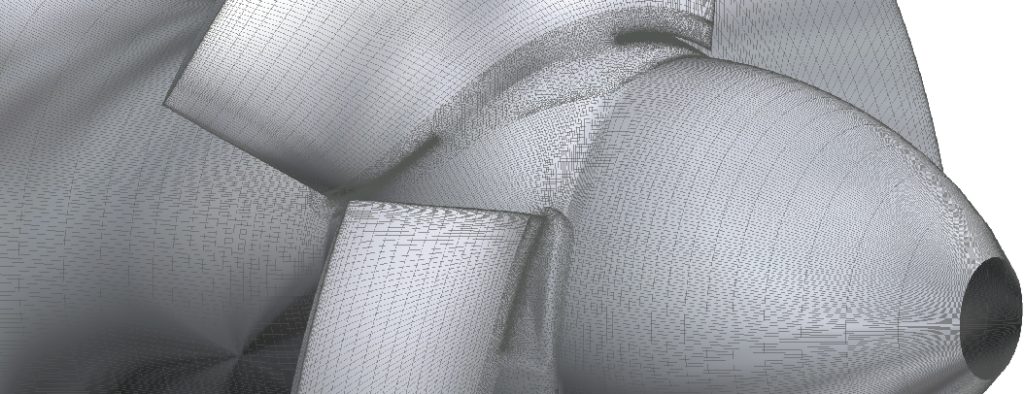
The quality of essential simulation output depends absolutely on getting the mesh right. The kind of refinement and the type of mesh used should go by physics in place. For instance, a flow with dominant turbulence generation from the boundary layer separation needs a better focus on the boundary layer refinement to keep the Y+ = 1. A premixed combustion simulation in a SI engine will require an LES turbulence model and therefore a mesh refinement in the bulk to capture about 80% of turbulence kinetic energy there. Cases with moving parts in a fluid flow have to mesh with a priority to avoid negative volumes through dynamic meshing. Narrow gaps, a long list of parts in a big automobile assembly, etc.., are some overhead complexities demanding diligent craftsmanship.
This blog article shall apprise on the befitting advantages of “Ansys Fluent meshing” to thrive through such challenging meshing tasks.
I choose to narrate some of my recent personal experiences as a CFD user to shed more light on these features of flair, which is worth a deep dive. Going by its craft, an electric motor meshing pursuit is the best fit to kick off this section.
While performing a Conjugate heat transfer analysis for an electric motor I faced few challenges with mesh generation. Fluent meshing with its guided task-based workflows and best in place algorithm helped in meshing complex geometry with good quality within less time & economical mesh count. In this post, I will be discussing the fluent meshing approach & how it helped with the pre-processing for motor thermal analysis.
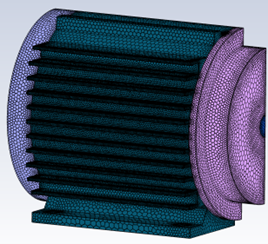

For the electric motor analysis, I was able to achieve conformal mesh with good mesh quality but the mesh count was higher initially. Higher mesh count will consume more solving time & hence I was looking up for options that can help me reduce the mesh count & still preserve the mesh quality. One of the reasons for high mesh count was the proximity settings where the solids were also meshed with a fine sizing to maintain conformal mesh. So, a non-conformal mesh approach was utilized with solids having a bit coarse mesh which provided an advantage to generate a fine mesh to the fluid regions. With fine-mesh confined to the fluid regions, mesh count with a non-conformal approach was reduced to ~60%. But with non-conformal mesh, I had to invest time in assigning the mesh interfaces, which eventually consumed more time as multiple mesh interfaces are involved.
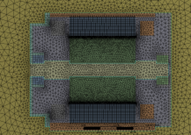
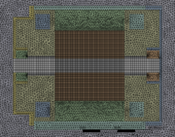
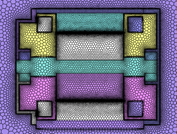
The same model was tried in fluent meshing under the conformal polyhexcore mesh approach, this time with prism boundary layers included. 8 cores were used for parallel meshing which exponentially reduced the meshing time. The mesh count was reduced to 40% compared to the tetrahedral mesh & the mesh quality was within the acceptable limits. For the boundary layer resolution as well, the polyhedral prisms helped in maintaining the quality compared to tetrahedral prisms within narrow air gap regions. Results for the 3 cases were compared & there was a good agreement. So, from this experience, I observed that fluent meshing can help in reducing the pre-processing time to a greater extent & I would highly recommend this approach. In the next part, I will be discussing more regarding various capabilities provided in fluent meshing which will highlight the extent to which fluent meshing can simplify pre-processing work.
For dirty geometries with leakage and overlapping parts, an analyst has to spend hours preparing a watertight geometry for simulation. Fluent meshing is equipped with a Wrapping technology to capture the complex or dirty geometry. Developing a watertight geometry for components like engine or complex assemblies can be a time-consuming activity. Underhood analysis with complex & interfering geometries like engine, radiator & chassis can easily mesh with wrapping technology. Native cad file formats like STL & step or can be directly imported & part management can be performed to select the simulation model. While meshing a dirty geometry some complex features which have less impact on the simulation results can be overlooked using wrapping technology. In case the wrapper has missed any features of interest than using the edge feature extraction method one can fine-tune the wrapping function. Another option of Leakage detection allows the wrapper to patch the leakage in geometry below the provided threshold value thus eliminating the tedious need to work at the geometry level.